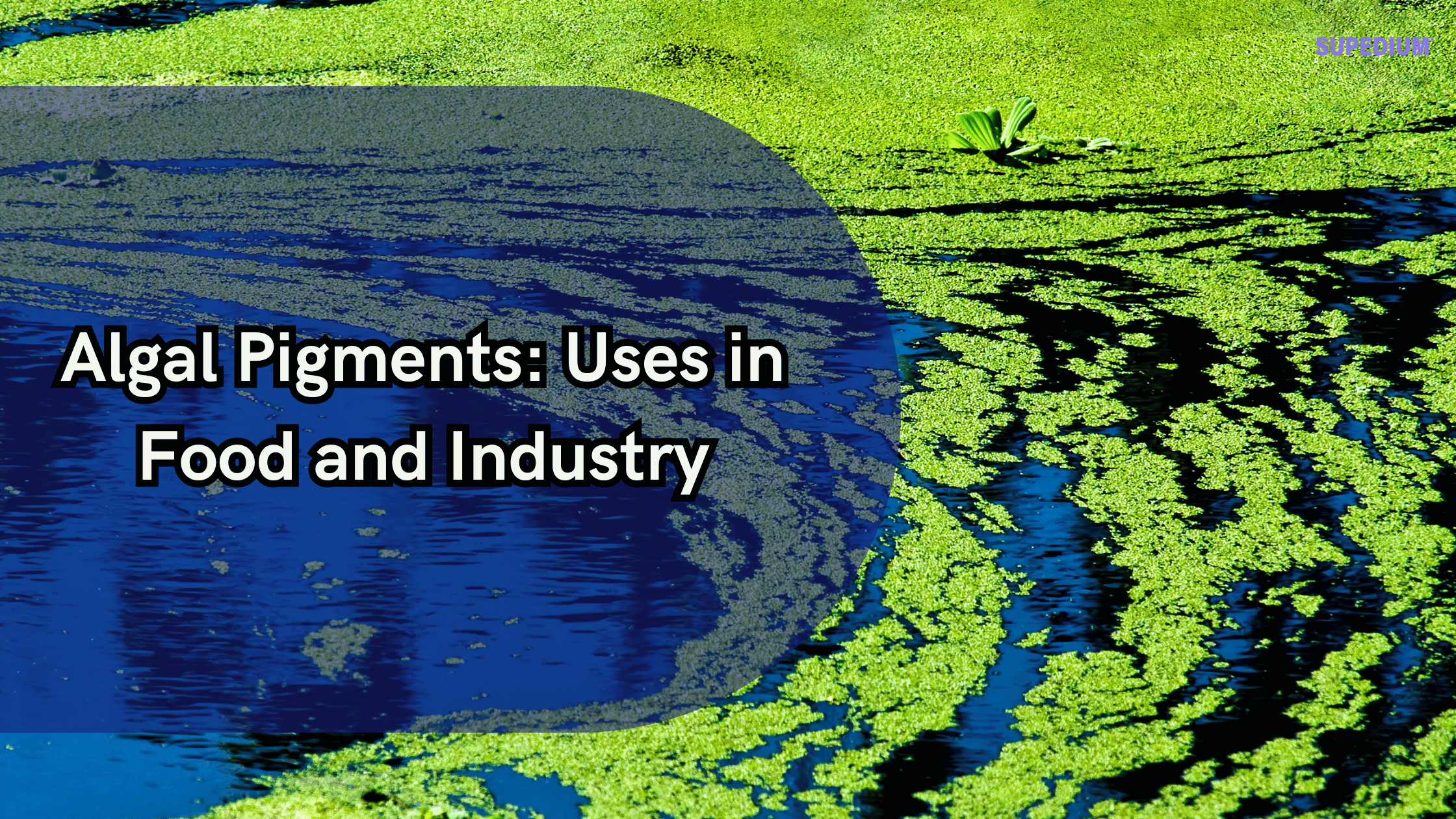Table of Contents
![]()
Introduction
Algal pigments are natural compounds produced by various algae that play a crucial role in photosynthesis and protection from UV radiation. These pigments not only contribute to the vibrant colors of aquatic ecosystems but also have significant applications in food and industry. This article explores the different types of algal pigments, their uses in food products, industrial applications, environmental impacts, and future trends.
Types of Algal Pigments
Algal pigments are classified into several categories, each with distinct properties and functions.
Chlorophyll
Chlorophyll is the green pigment found in many algae, including green algae. It is vital for photosynthesis, allowing plants and algae to capture light energy. Beyond its natural role, chlorophyll is widely used as a food colorant and nutritional supplement due to its antioxidant properties.
Carotenoids
Carotenoids are a diverse group of pigments that include beta-carotene and lutein, primarily found in brown and red algae. These pigments are known for their vibrant orange, yellow, and red colors. Carotenoids also have health benefits, acting as antioxidants and contributing to eye health.
Phycobilins
Phycobilins are water-soluble pigments found in cyanobacteria and red algae. They play a crucial role in capturing light energy for photosynthesis and are responsible for the blue and red hues of certain algae. Phycobilins are increasingly being used as natural colorants in various food products.
Other Pigments
In addition to the major categories above, other pigments such as anthocyanins and fucoxanthin are also derived from algae. Anthocyanins are known for their antioxidant properties and are responsible for red, blue, and purple colors in many plants. Fucoxanthin, primarily found in brown algae, has potential health benefits and is being studied for its effects on fat metabolism.
Uses of Algal Pigments in Food
Algal pigments have found a wide array of applications in the food industry, particularly as natural alternatives to synthetic additives.
Natural Colorants
One of the most significant uses of algal pigments is as natural colorants. With increasing consumer demand for clean-label products, food manufacturers are turning to algal sources to replace synthetic dyes. Spirulina, for example, is used to impart a blue-green color to products like smoothies, candies, and even pasta.
Nutritional Additives
Algal pigments are not just aesthetic; they also offer nutritional benefits. Rich in antioxidants, vitamins, and minerals, pigments like chlorophyll and carotenoids are used in dietary supplements and functional foods. They help boost immune function, improve skin health, and provide anti-inflammatory benefits.
Functional Ingredients
In addition to color and nutrition, algal pigments can enhance flavor and texture in food products. For instance, certain pigments can improve the mouthfeel of plant-based products, making them more appealing to consumers. This versatility makes algal pigments valuable in developing innovative food solutions.
Regulatory Aspects
The increasing use of algal pigments in food has raised questions about safety and regulatory approval. Many algal pigments are recognized as safe (GRAS) by regulatory bodies like the FDA. However, producers must adhere to labeling guidelines, ensuring transparency and consumer trust.
Uses of Algal Pigments in Industry
Beyond food, algal pigments are making strides in various industrial applications.
Cosmetics and Personal Care
The cosmetics industry is increasingly incorporating algal pigments due to their natural origin and beneficial properties. They serve as colorants in makeup products and skincare formulations. Additionally, antioxidants found in these pigments can help protect skin from environmental damage, making them an attractive choice for personal care products.
Pharmaceuticals
Research is ongoing into the potential therapeutic applications of algal pigments. Compounds derived from algae are being studied for their anti-inflammatory and anti-cancer properties. This research holds promise for developing new pharmaceutical agents based on natural ingredients.
Biofuels
Algal pigments also play a role in biofuel production. Algae are being cultivated for their biomass, which can be converted into biofuels. The pigments themselves can contribute to the overall efficiency of this process, providing a sustainable energy source while minimizing environmental impact.
Textile Industry
The textile industry is exploring algal pigments for dyeing fabrics, offering a more sustainable alternative to synthetic dyes. Algal-based dyes can provide vibrant colors while reducing the environmental footprint associated with traditional dyeing processes, including water pollution and chemical waste.
Environmental Impact and Sustainability
The cultivation and use of algal pigments present several environmental benefits.
Ecological Benefits of Algal Cultivation
Algal farming can contribute positively to the environment. It aids in carbon sequestration, helping to mitigate climate change. Additionally, algae can be used in bioremediation efforts, cleaning up polluted water bodies by absorbing excess nutrients and contaminants.
Sustainable Harvesting Practices
Sustainable practices in algal harvesting are crucial to ensure the longevity of resources. Methods that minimize ecological disruption and promote regeneration are essential for maintaining healthy ecosystems while meeting industrial demands.
Challenges in Production and Scaling Up
Despite their benefits, challenges remain in the large-scale production of algal pigments. Factors such as high cultivation costs, scalability issues, and the need for technological advancements pose hurdles. Ongoing research aims to address these challenges, making algal pigments more accessible and economically viable.
Future Trends and Research
The future of algal pigments is promising, with several trends shaping their development.
Advances in Biotechnology
Biotechnology is paving the way for enhanced algal pigment production. Genetic engineering and synthetic biology approaches are being explored to optimize algae strains for higher pigment yields and improved quality. This innovation could significantly lower production costs and broaden the range of applications.
Market Trends and Consumer Demand
As consumers increasingly seek natural and sustainable products, the demand for algal pigments is expected to rise. The food and cosmetics industries are likely to see continued growth in the use of these natural colorants, driven by consumer preferences for clean-label products.
Potential New Applications
Ongoing research may uncover new applications for algal pigments in various sectors, from bioplastics to eco-friendly packaging materials. As awareness of environmental issues grows, the versatility of algal pigments positions them as a key player in sustainable innovation.
Conclusion
Algal pigments are valuable natural compounds with diverse applications in food and industry. From serving as natural colorants and nutritional supplements to being integrated into cosmetics and biofuels, their uses are expansive and growing. As research progresses and technology advances, algal pigments are poised to play an even more significant role in promoting sustainability and health. The future looks bright for these remarkable compounds, reflecting a shift toward greener practices in various sectors.
Share This





Be the first to comment